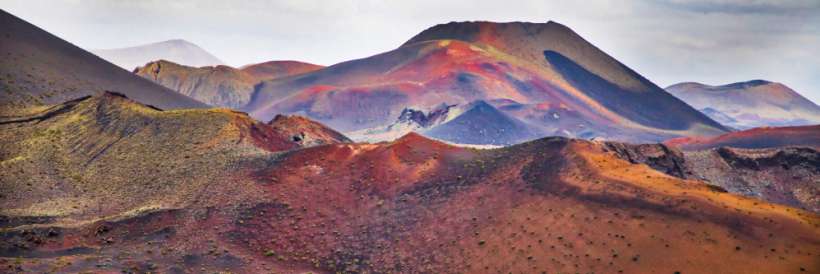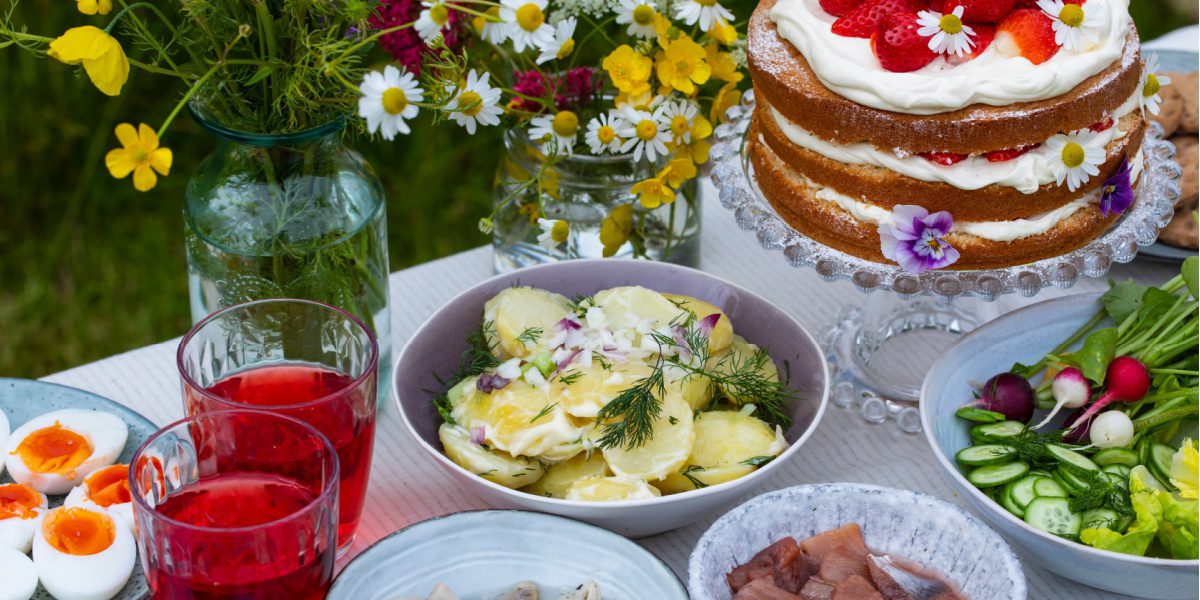Greetings, traveller, and welcome to the Highlands & Islands of Scotland. A land of myths and legends, magic and mysticism, this remote part of the UK has inspired many a fairytale over the centuries, and when you consider the incredible terrain and eerie castle ruins that dot the mountains, it’s not hard to see why!
This region of Scotland is subdivided into six council areas: Caithness, Sutherland, Ross and Cromarty; Inverness, Nairn, Moray, Badenoch and Strathspey; Lochaber, Skye and Lochalsh, Arran, Cumbrae, Argyll and Bute; Eilean Siar; Orkney Islands; and Shetland Islands. As before, we’ve picked out one highlight from each council area to give you an indication of what you might find there.
Wick Heritage Museum – Caithness, Sutherland, Ross and Cromarty
To truly immerse yourself in a place, you need to understand its history. A town built on the once-booming herring industry, Wick in Caithness has a strong, enduring bond with the North Sea, as do many of the settlements along the eastern coast, and you can discover all there is to know about this tumultuous past in the extensive Wick Heritage Museum. Housed within a labyrinthine space of old business rooms and family homes on Bank Row (the street was infamously bombed during the Blitz), this huge museum showcases authentically-decorated rooms from days gone by, as well as tracing the history of the herring industry and its impact upon the people of Wick. In the Fishing Hall, examples of the boats that used to operate out of the harbour can be seen, while the Cooperage tells the story of how the cured herring was exported around the world. The crowning glory of the museum, though, is the extensive Johnston Collection: a vast series of photographs snapped over three generations by the local Johnston family, this rich exhibition depicts life in and around Wick from 1863 and 1975 – quite the album! As well as portraits of locals from both working and middle classes, the photographs capture a period of time from when Wick was the ‘herring capital of Europe’ to the quiet seaside town it is today. Afterwards, pay a visit to the harbour itself, where remnants of the port’s fishing past can still be seen.
Glenfiddich Distillery – Inverness, Nairn, Moray, Badenoch and Strathspey
All around the world, there are tipples that are to be respected and supped upon on only the most important of occasions. Tucked away in Dufftown, Moray, there sits an old factory, emblazoned with a name that will make whisky connoisseurs weak at the knees: Glenfiddich Distillery. Meaning ‘valley of the deer’, hence the stag upon the logo, there has been a whisky distillery here since the Grant family handbuilt the stone factory in 1887, with the first drop of whisky said to have fallen on the copper stills on Christmas Day that year itself! Since then, the Glenfiddich name has become one of the most revered brands in the whisky business, claiming accolade after accolade at the prestigious San Francisco World Spirits Competition and being amongst the most highly rated spirit makers in the Beverage Testing Institute’s long history. Today, the distillery is still in operation, and there are a variety of expert-led tours on offer for those who want to discover the long-held secrets of this most revered single malt dram. On your alcohol adventure, you’ll see the unique copper stills that play such an important part in manufacture, as well as the aged oak casks and a glimpse at some of the most expensive bottles of whisky around – believe us when we say that these can go for a pretty penny! Whether you’re a whisky lover or simply interested in the history of one of the world’s most celebrated labels, the level and care and craftsmanship that goes into every dram is truly remarkable – we’ll raise a glass to that!
King’s Cave – Lochaber, Skye and Lochalsh, Arran, Cumbrae, Argyll and Bute
Satisfy your craving for myths and legends by taking a journey to the Isle of Arran and the hallowed King’s Cave. Found at the base of sandstone cliffs, this deep cavern is rumoured to have been the hiding place of Robert the Bruce following (or prior to) a defeat in battle. It’s said that while here, Robert watched as a spider wove an intricate web: even though the spider fell many times, it kept returning to the web until it was completed. It’s said that Robert the Bruce used the metaphor of the spider when addressing his troops at their next battle, stating that ‘if at first you don’t succeed, try, try and try again’. Of course, historians have long disputed whether this really happened but, tramping the damp and cavernous interior, it’s impossible not to be swept up in the legend of the place. Aside from being a kingly hideaway, the cave also boasts numerous Viking carvings upon the central pillar: one appears to show a figure holding a bow above his head, while another may depict a cross, suggesting that the cave could have been used for religious purposes. The rough outline of a horse can also be traced upon the walls, which only adds to the mystical aura of the cave. The King’s Cave is best accessed by foot, and a brief circular walk is considered a great way to discover the cave, as well as taking in the varied landscape, from leafy forest to windswept Machrie Moor – on a clear day, see if you can spot the faraway shores of Ireland across the Kilbrannan Sound. Other walking routes are also available, so make sure you pack your hiking boots to make the most of this legendary location!
Hirta Island Ghost Town – Eilean Siar (the Outer Hebrides)
Eilean Siar, also known as the Western Isles or the Outer Hebrides, is a collection of remote islands off Scotland’s west coast. The isles have a rich and varied history to match their multi-faceted, stunning landscapes: once a Norse stronghold for over 400 years, the islands came under Scottish sovereignty in 1266, after which they acted as a base for many infamous clans, including the the MacLeods and MacDonalds. Nestled within the archipelago of St Kilda, one of the outermost island collections in Eilean Siar, is the now-desolate outcrop of Hirta Island. Evidence suggests that humans have occupied this island for at least two millenia, with remnants of their existence still being uncovered in the mountainous areas of the isle. It is, however, the eerie (and aptly-named!) Hirta Island Ghost Town that has placed this island on the tourist map. Once home to a thriving island community, these empty stone buildings were abandoned in the 1930s when villagers realised that their traditional way of life was no longer sustainable – no one has lived on Hirta Island since they departed nearly 100 years ago. What was once the high street can still be clearly seen thanks to a raised ‘pavement’, and the remains of field walls hint at the agricultural past. Numerous boat tours ferry visitors to and from the island, which is now overrun with seabirds, so you’ll have plenty of opportunity to discover more about the people who lived in one of the most isolated communities in the world!
Skara Brae Prehistoric Village – Orkney Islands
For a glimpse into prehistory quite unlike any other, make for the ‘Scottish Pompeii’ – Skara Brae Prehistoric Village. Considered one of the best-preserved and most complete ancient settlements in Europe, this small cluster of eight stone dwellings was inhabited over 5000 years ago, before the construction of Stonehenge and even the Pyramids of Egypt! Built somewhat below ground, this semi-subterranean settlement was only discovered in 1850 after a powerful storm blew away the sand that had been covering the village for centuries, leading to the unearthing of ancient furniture and every day artefacts that the community would have used, including primitive hand tools and some pottery. It’s thought that the people who lived here all those centuries ago were farmers, hunters and fishermen, as no weapons have ever been found on the site despite continued archaeological investigations. Each dwelling follows the same basic design, consisting of a large square room and a central fireplace sandwiched by two beds; there would also have been a shelved stone dresser of some sort on the wall opposite the entrance. Visiting today, tourists have the opportunity to see into the past, wandering the sandy streets that this Neolithic community would have once done – it sends a tingle up the spine just thinking about it! From Skara Brae, visitors can easily access the white-sand beach that lines the Bay of Skaill, or opt to walk around the Loch of Skaill on the opposite side – both offer striking views of the surrounding area that our ancestors would have once looked upon too!
Muckle Flugga – Shetland Islands
We couldn’t miss the opportunity to throw in a bit of Scottish folklore into our final highlight of the Highlands & Islands of this ancient country, so we’ve opted for the rather wonderfully named Muckle Flugga. Meaning ‘large steep-sided island’ in Old Norse, this distant island is sometimes referred to as ‘the northernmost point of the British Isles’, but sadly it cannot claim this title as the far smaller Out Stack actually lies further afield. However, according to ancient folklore, it appears that both islands were created at the same time by two love-struck and warring giants, Herma and Saxa. Desperate to win the hand of a beautiful mermaid, the giants hurled huge rocks at each other, including the great chunks that are now Muckle Flugga and Out Stack. Unfortunately, despite their best efforts to woo this lady of the water, the mermaid was having none of it, and instead tricked them both into drowning in pursuit of her affections (#queen). Muckle Flugga is not merely famous for its legendary history, though, but also the lighthouse that sits upon the peak. Often dubbed ‘the impossible lighthouse’ due to its precarious position upon the island and the powerful storms that lashed the rock every winter, the structure was originally built to protect ships during the Crimean War by brothers Thomas and David Stevenson. It’s said that Thomas’ son, Robert, visited the island as a young man and it became the basis of his map in the celebrated novel Treasure Island. The lighthouse was manned until 1995 when it became fully automated, thus also robbing Muckle Flugga of the title of ‘northernmost inhabited island in the United Kingdom’. Still, a visit to the island makes for an impressive day trip.
We hope our rundown of the highlights to be found in the Highlands & Islands of Scotland has provided you with inspiration to visit this wild and rugged part of the UK.





